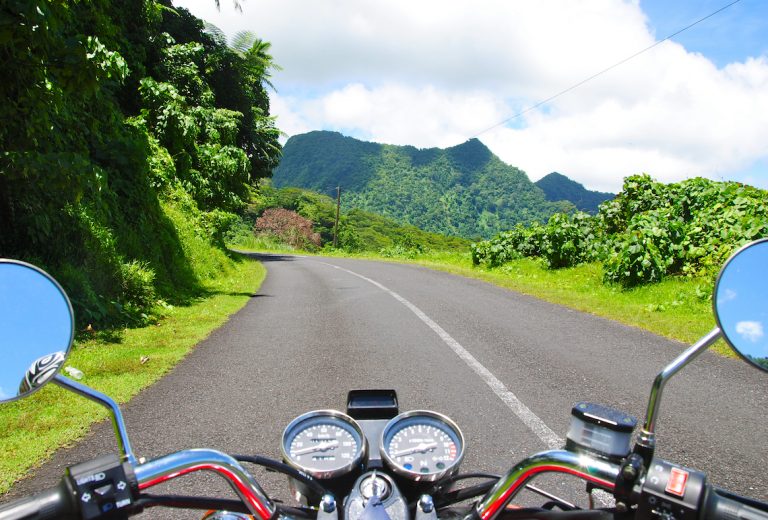EASY RIDER
Laid back, slow-paced and not another vehicle in sight, Ian Neubauer’s exploring the wonders of Savai’i, Samoa
In the early hours of 7 September, 2009, drivers in Samoa did what would normally be considered suicidal: they changed lanes and started driving on the other side of the road.
The changeover from right to left was initiated to make it easier and cheaper for Samoans to buy cars from nearby New Zealand and Australia instead of paying top dollar for imports from the US. And while opponent groups like PASS (People Against Switching Sides) predicted a bloodbath, no road fatalities were reported in the following days.
Its success was credited to a media blitz and the planting of speed humps and signs throughout the country reminding drivers to stick to the left. Another reason is the fact there are very few cars in Samoa: 17,000 at the time of changeover. And with so few cars on a network of relatively well-paved roads, Samoa also makes a great destination for motorbike touring. Or so I figured…
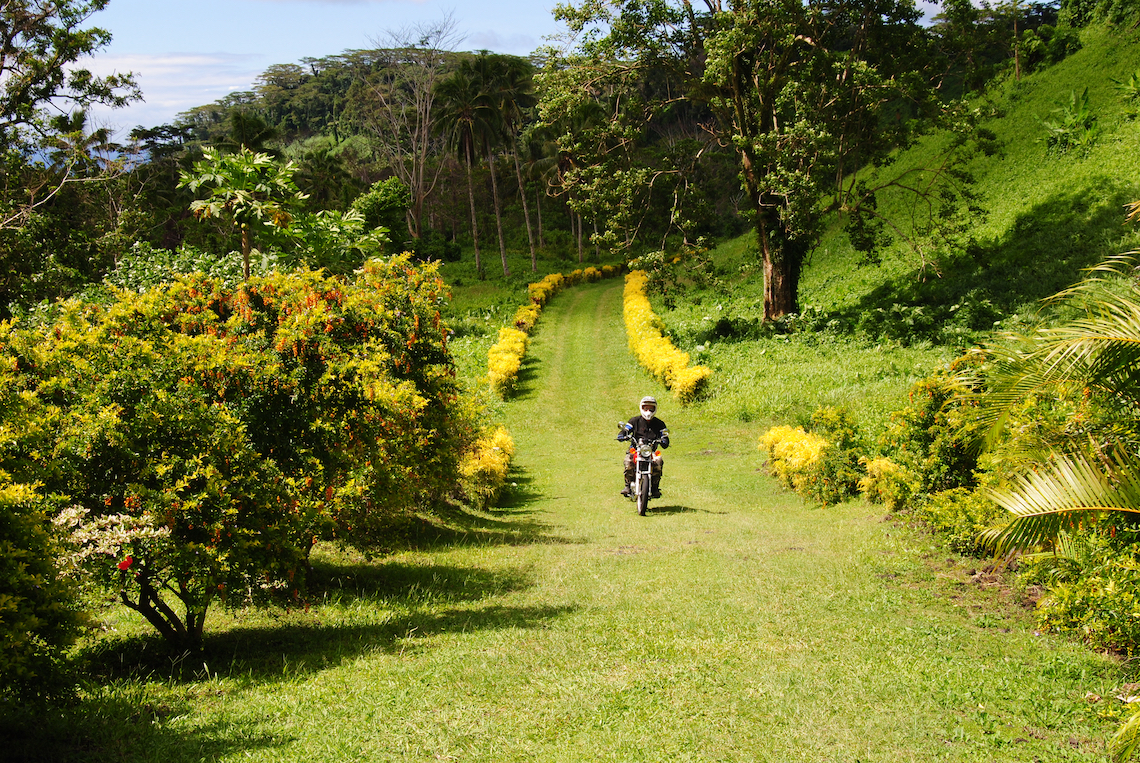
Paradise Lost
Rivers of sweat pour down my back as I manoeuver my bike – a small but nimble Suzuki GN 125 S – north along the ring road on Samoa’s main island of Upolu. The palm-fringed coast is impressive, but my preconception of Samoa being an untouched Pacific idyll is shattered into a thousand bits as I fight tooth and nail to avoid being mowed down by smoke-belching buses and trucks. The drivers don’t give a toss about the speed limit or the few traffic lights found on the outskirts of the capital, Apia. On several occasions I’m chased by packs of mangy dogs and I come within inches of a head-on collision with a pig the size of a calf which dashes across the road. Then, without provocation, some idiot in a passing car lobs a plastic coke bottle at my head. Luckily it’s empty and bounces harmlessly off my helmet’s sun-visor, but the incident leaves me shaking and wishing I’d never left home.
After passing the international airport the traffic drops off a bit. Ten minutes later I pass a port where a large vehicle ferry is docked. Looking at my map, I realise it’s the sea link to Savai’i – the largest of Samoa’s 10 islands. With the next ferry scheduled to leave in 10 minutes and only two cars and one truck waiting to board, I need little convincing to follow them through when the boom gate opens. “Most of Savai’i remains uninhabited and has retained its pristine beauty,” my guidebook explains. “The island’s wild coast is lined with traditional villages leading to tropical rainforests, rambling plantations and lava fields.” Perfect.
With these words on my mind, I lay back for the 90-minute boat trip while daydreaming of the tropical island paradise I’d spent so much time fantasising about in the lead up to my trip – hoping that this time I wouldn’t be so morbidly disappointed.
As the ferry approaches the tiny port town of Salelavalu where the only building of note is a church and a long empty beach curls around a thickly forested coast, I get the feeling I may have just found what I’m looking for.
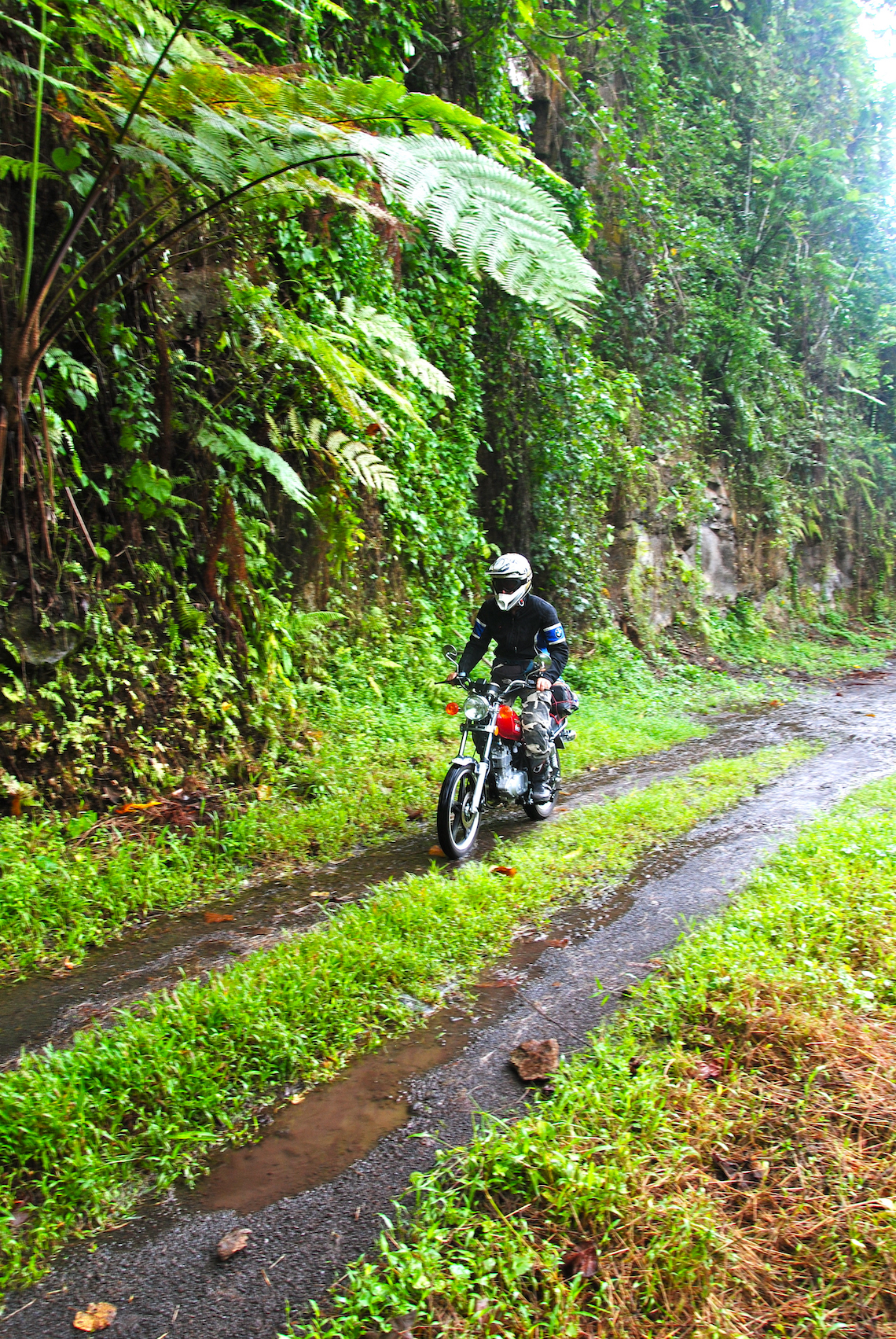
Paradise Found
The little Suzuki purrs with pleasure as I bust out of the ferry and randomly take a right onto the main drag. I attract inquisitive looks from locals as I come to a stop at Savai’i’s one and only traffic light – not only because of my respect for the road rules but because of how rare motorbikes are in this country. Over the course of the next week I would see only two other motorbikes in Samoa – a cop mounted on a scooter and an expat cruising around on a Harley in the capital.
Minutes later I’m buzzing along Savai’i’s ring road without a care in the world, the hot tropical wind blasting against my neck and face as I push the little Suzuki up to 30mph. It can go a little faster but they say Samoa’s ‘the land to take your time’, and after a super stressful year at work, taking my time is a top priority. Going slow also allows me to take in the stunning scenery: half-moon bays and cobalt blue water to my right; rainforest, waterfalls and mangrove swamps to my left.
Every so often I pass a small village centred around towering whitewashed churches belonging to one of the 52 denominations active in Samoa. Until the arrival of Christian missionaries here in 1828, the Samoans were jungle-dwelling headhunters who loved nothing more than taking a bite out of their enemies. But you’d never know it today, because these islanders are just about the friendliest people on earth. Nearly everyone I pass waves, shouts ‘hello’ or throws me a big toothy grin, and the children go absolutely mental over my bike. Every time I pull over at a beach for a swim or at a village store for a cold drink, they swarm around the Suzuki posing for photographs and to shake my hand. But what I like best of all about Savai’i is the traffic, or lack thereof. On my first day I count only six cars and mini-buses, all of which travel even slower than I do!
That night I sleep in a fale, Samoa’s answer to budget accommodation. These open-air, thatch-roofed bungalows are built right on the beach and equipped with a small mattress, mosquito net, pillows and blanket. I fall asleep to the sound of baby waves breaking on the beach, with air-conditioning provided by the gentle southerly winds.
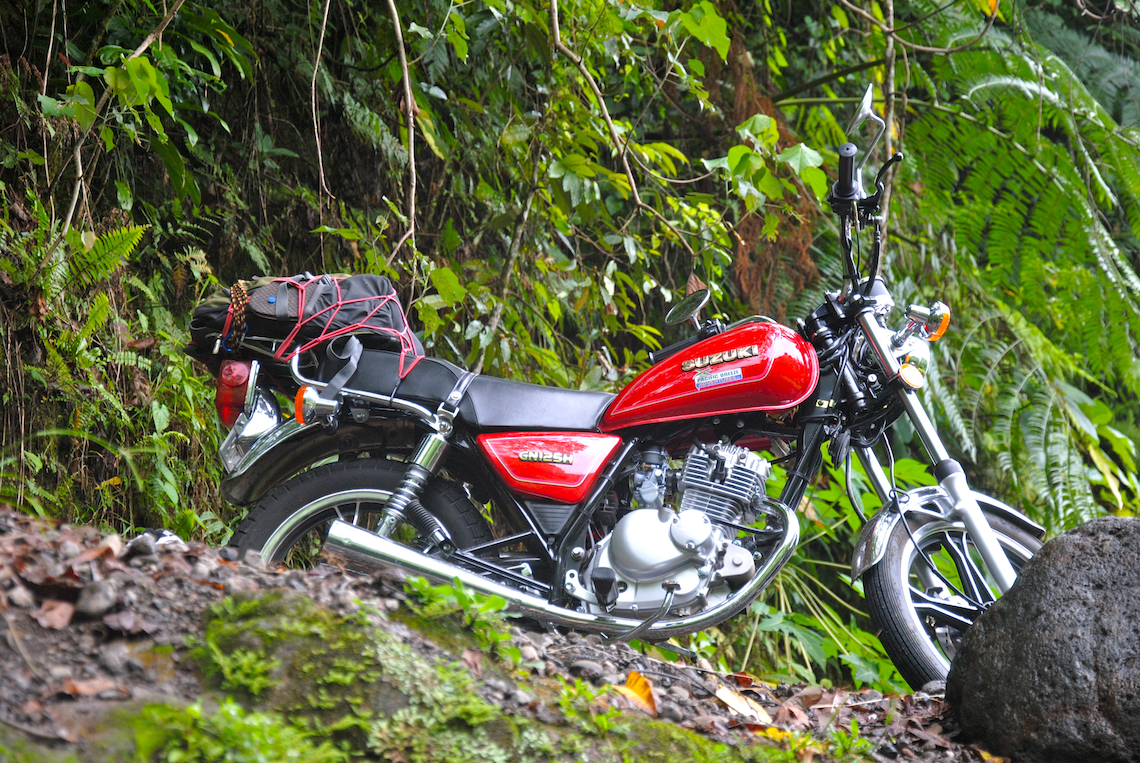
Swimming with turtles
Sunshine pours into my fale at daybreak. I jump straight out of bed and into the lukewarm ocean, immersing myself in an underwater wonderland that’s home to fluorescent coral and all kinds of fish. Afterwards my hosts make me a traditional Samoan breakfast. The fruit platter – pineapple, mango, pawpaw and bananas – is 100 times more flavoursome than anything I could buy back home, but the boiled taro root crop they substitute for bread is overloaded with starch and tastes like glue; I’d have to be starving to get it down.
I jump on my bike and ride at leisure to the north of the island, passing the Saleaula Lava Fields. The remnants of a series of volcanic explosions that rocked Savai’i from 1905-11, the eerie black moonscape stretches miles to the coast. A little further up I stop of at the Saleaula Turtle Sanctuary – one of the few places in the world where you can swim with turtles. Spanning up to a metre across, they make affectionate pets and love to be scratched under their chin. The guy who runs the place shows me how to hold onto the front of the turtles’ flippers and catch a ride on their back. It’s an amazing experience I won’t quickly forget.
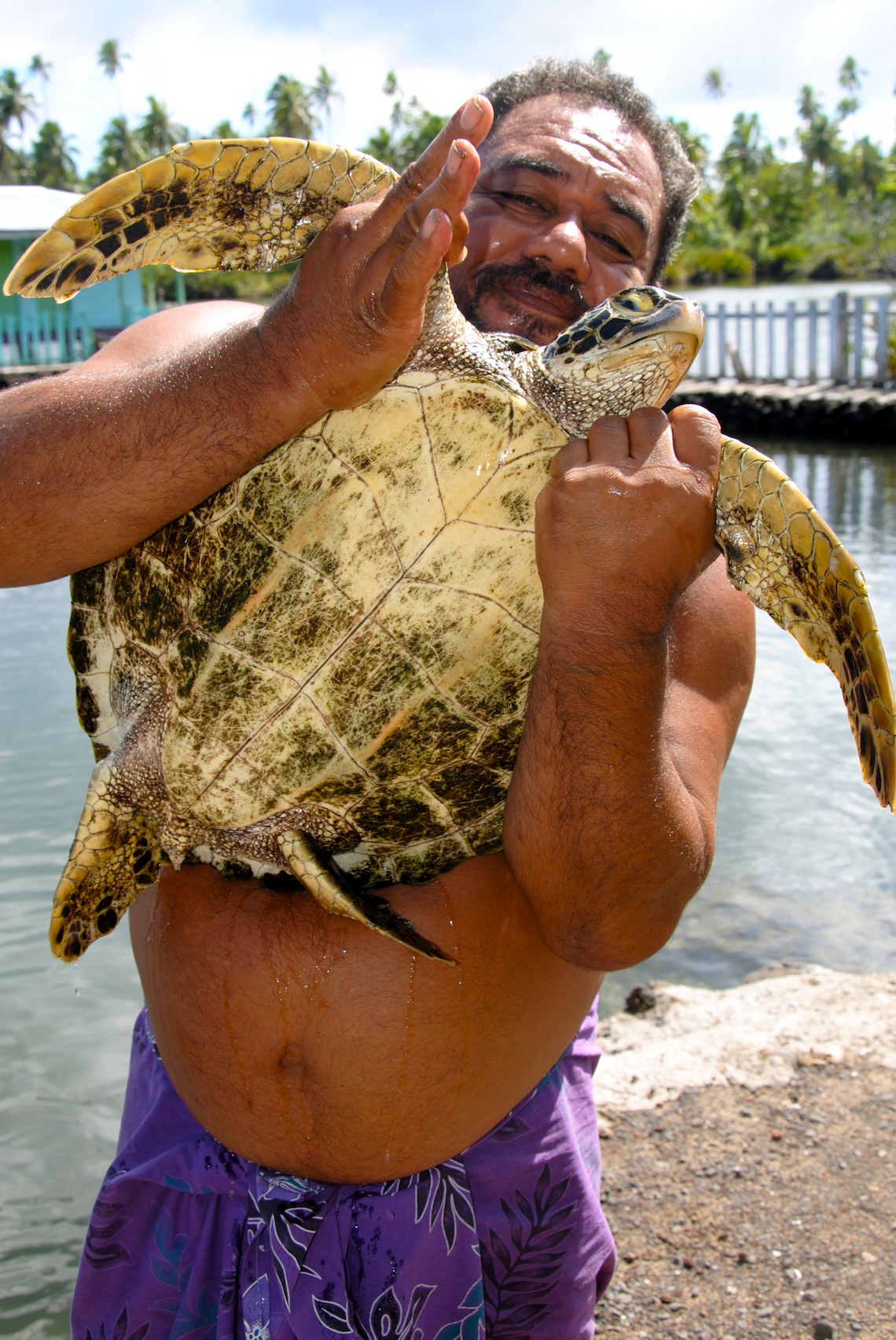
My next stop is the massive Mount Matavanu Crater – the source of the lava fields I passed earlier on. It’s a six-mile ride along a rocky track to get there that at times degrades into a motocross track. The Suzuki isn’t built for it but does an admirable job – just one of the reasons lightweight bikes often trump big bores.
A mile from the top, I’m signalled to pull over by a guy called Craterman who demands a $10 (£6.50) entry fee for “taking care of the road”. I can’t imagine what he possibly means by this but I pay up all the same and am invited in to his little hut for a cup. Craterman knows a hell of a lot about geology for a guy in a skirt. But the most interesting thing about him is the third nipple that stands out in the middle of his chest like the villain in the James Bond flick Dr. No, I reckon Nippleman might be a more appropriate name.
The crater itself is colossal but nothing worth writing home about. Overgrown with tree ferns and a million miles of vines, it’d probably be better appreciated form the air, but it was worth it just to meet Nippleman and enjoy the ride through the jungle.
I return to the coast, fill up the tank and head west along the north coast of the island. It’s the only segment of Savai’i’s ring road that swings inland: a snaking thoroughfare that cuts around a 1,885m high mountain range. I push the little Suzuki to its top speed of 50, zipping gracefully along what has to be the most beautiful road I’ve ever ridden along. But like all good things it comes to an end, punching me out at Asua Bay in the northeast corner of the island.
Weekend at Sali’s
Asua Bay is the stuff Bounty adverts are made of – a bluewater lagoon about two miles wide with a sand-ringed, uninhabited islet at its centre. I crash at a sweet little resort called Va-i-Moana run by a cool Samoan guy called Sali who grew up in Australia and makes me feel right at home. The kitchen staff practically fall over themselves to look after me, cooking me up lobster, fresh salads and pancakes stuffed with honey and fruit.
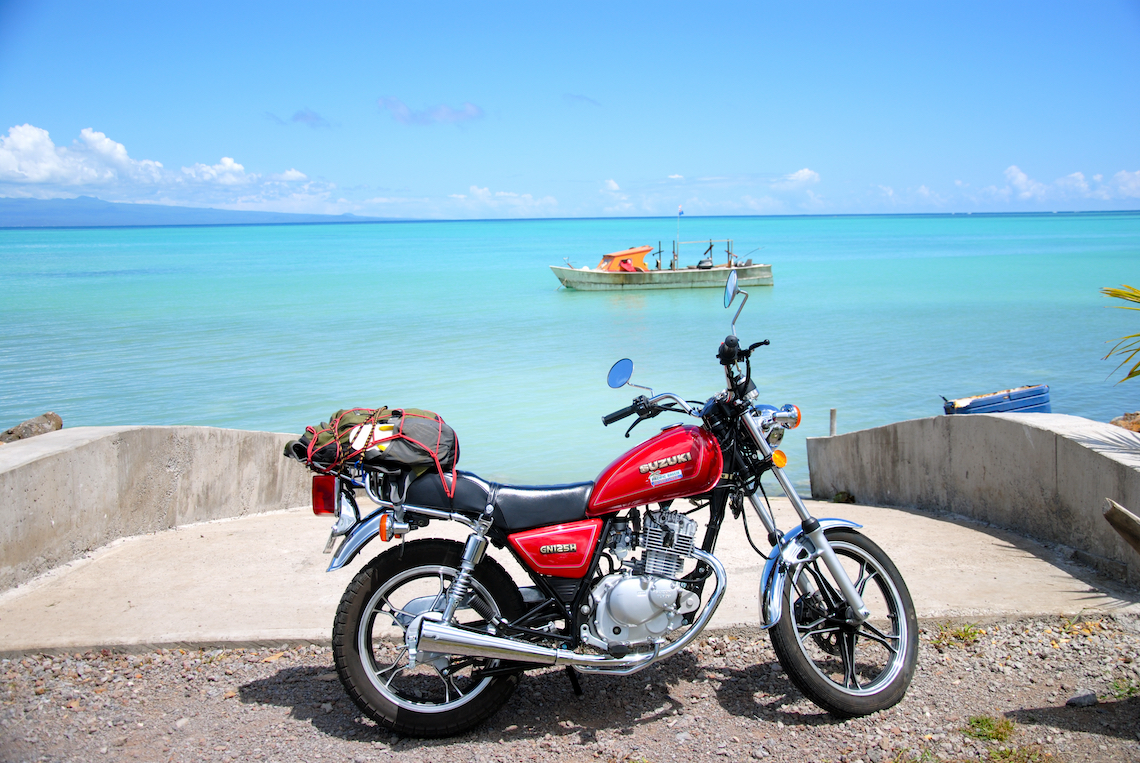
They’ve got kayaks I use to explore the lagoon and on one outing I see eight different turtles as they surface for air. I go fishing off the pier with Brian, Sali’s four-year-old boy, and sink beers with Pele, a marine biologist who runs game fishing charters on a motor yacht moored in the lagoon. I read my book and fall asleep on a hammock on the beach, and go for a walk into the village where I’m coerced into a game of volleyball with Samoans twice my size, and they’re the women. The men are bigger still but gentle giants who wouldn’t hurt a fly.
Three days pass before I get back on my bike, burning along the west coast of this paradisiacal island. The road skirts through jungle, around extinct volcanoes and along black volcanic beaches where endless, perfect barrels break over offshore reefs.
It’s early afternoon when I pull into a car park near the village of Puleia, the start of the walking track to Savai’i’s Afu Aau Waterfall. I’m not nearly as keen on hiking as I am on riding bikes, so I cheekily motor it right up the falls. Set amidst lushes of thick green jungle, it comprises a series of crystal-clear freshwater pools where the Blue Lagoon could have been filmed. I change into my board-shorts, jump in for a swim and spend the hour paddling around among schools of shrimp and little fish.
I’m drying off and getting ready to go when a couple of New Zealanders turn up. We strike up a conversation about the places we’ve been; I tell them about my great experience at Asua Bay and how much better Savai’i is compared to the main island of Upolu.
“Don’t write Upolu off,” they tell me.
“The south coast has some of the best beaches in Samoa. There’s the To Sua Trench, this massive saltwater lagoon, and a road that travels this really high mountain pass. The views up there are incredible; we did it in our car but it would be magical on a bike.”
My heart quickens. I still have two days left in Samoa, and there’s no way I’m spending even a minute of it standing still.
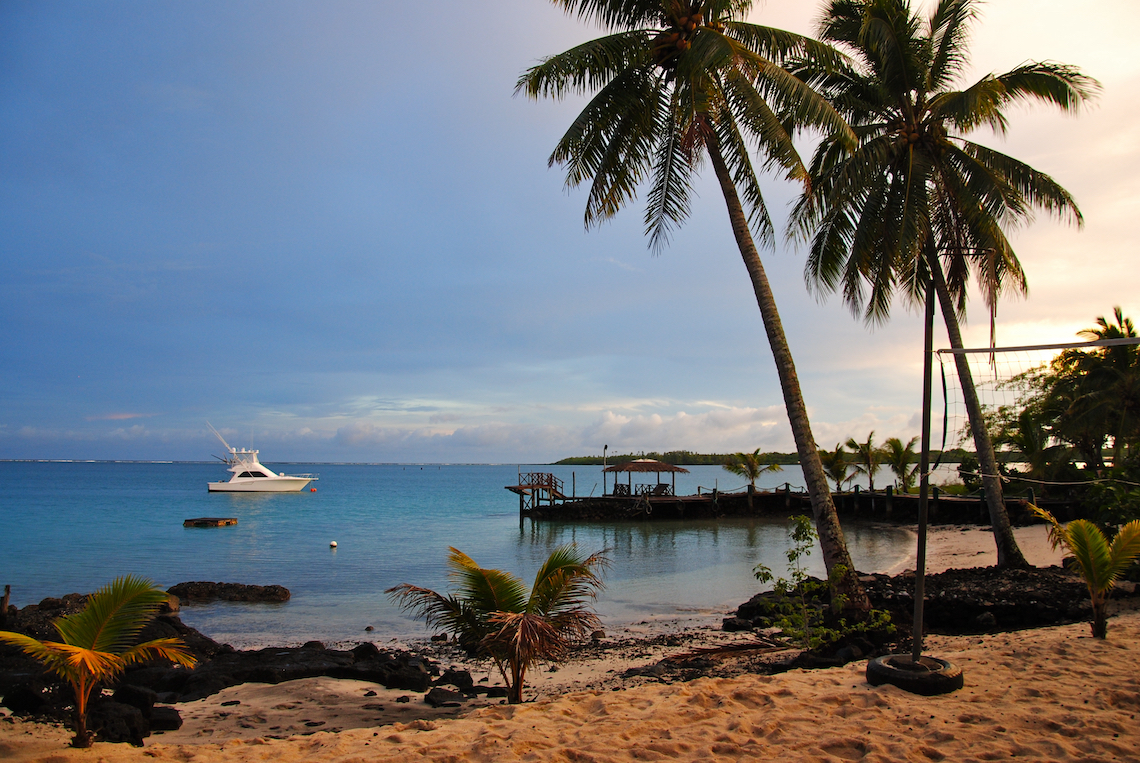
Who’s Riding?
Ian was five years old when his parents took him on his first over- seas trip to Tahiti. As soon as he finished high school in Australia, he hit the road, spending years backpacking across Europe, the Middle East, South America, Southeast Asia and the South Pacific. He’s combined his work as a journalist and passion for off-road touring to travel to and through some of the most exotic countries in the region, including Cambodia, Laos, China and the Philippines. Ian loves nothing more than charging solo through strange lands, getting to know the locals and covered in mud. It’s a tough job, but someone’s got to do it.
The bike
It may be small and lacking in horsepower, but the Suzuki GN 125 S is perfect for short-distance adventure riding in places like Samoa. “They’re light and easy to handle, you can comfortably take a pillion passenger, they’re quiet – villagers don’t like noise pollution – and really light on the fuel. Anyone with a motorbike licence can ride them; they’re just a bicycle but with a motor,” says Lenny Evans of Pacific Breeze Adventures, who rents them in the capital Apia for 80 tala (£22) a day including helmets, gloves and jackets. Lenny also offers half-day and full-day guided tours of the main island of Upolu for 150 tala (£42) and 220 tala (£60) respectively. For bookings, see www.pacificbreeze.ws.
Want to do this?
How long does it take? Samoa is about the same size as Luxembourg and so your length of stay may depend on your ability to abandon the obsession with not riding the same patch of road more than once. Ian travelled for 7 days in the country, but don’t be surprised if after a short visit to paradise, you’ll wish you were escaping the real world for longer.
When to go? The best time to visit Samoa is between May and October during the dry season, the average temperature is around 26°C and you can expect humidity most of the year round. Between November and April the islands receive a beating from tropical storms, making for difficult, muddy riding.
Get there: Air New Zealand operates flights from London to Apia, Samoa, via Los Angeles. Journey time is just over 24 hours and fares begin at around £1,500.
Accommodation: Beach fales are a quirky and inexpensive way to stay in Samoa, typically built with a few posts and a thatched roof but with no walls. The Samoa Tourism Authority website provides a list of reputable beach fale resorts, hotel and self-catered accommodation, with contact and booking details, see www.samoa.travel.
Paperwork for you: You must obtain a visitor’s permit, valid for 60 days and free upon arrival in Samoa so long as you have valid passport and onward ticket.
Is it for you? After escaping the hustle and bustle of Upolu ring road, Ian found a tropical utopia of traffic-free well-maintained biking roads. If you’re willing to chat to the locals and absorb the laidback, friendly ethos of the country, Samoa could be the perfect paradise break, perhaps one to tie into that trip to Australia or New Zealand?
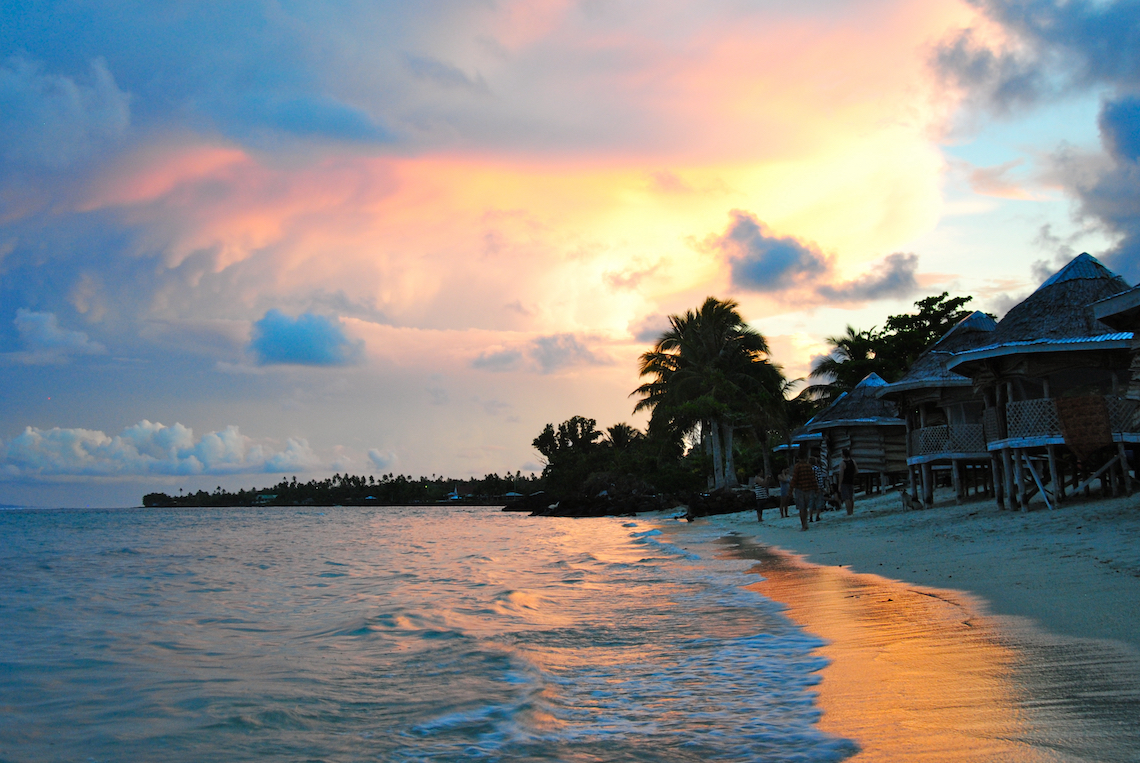
Totally tropical taste
Food is an important part of life in Samoa. The ingredients and cooking methods used are quite different to Western culture with very few spices, seasonings or additives. Ingredients will typically include breadfruit, taro (a starchy tuber similar to potato), taro leaves, green bananas and plenty of fish and seafood. An Umu is the traditional method used for cooking – sort of the Samoan equivalent to a bbq or raclette. A fire is built and hot stones are placed on top. Once the embers have burned down, food that’s been covered or wrapped in banana leaves is placed on the stones and left to cook. Raw fish is often eaten and coconut cream is typically used in most dishes. Samoans have bizarrely adopted corned beef into their diets but if you’d rather stick to traditional cuisine why not sample ‘Sea’ – a delicacy made from the innards of sea slugs normally sold at markets in coke bottles (and for a strong constitution only), or if you’re not up to it try Fausi – a dessert of taro served with caramelised coconut cream sauce.

